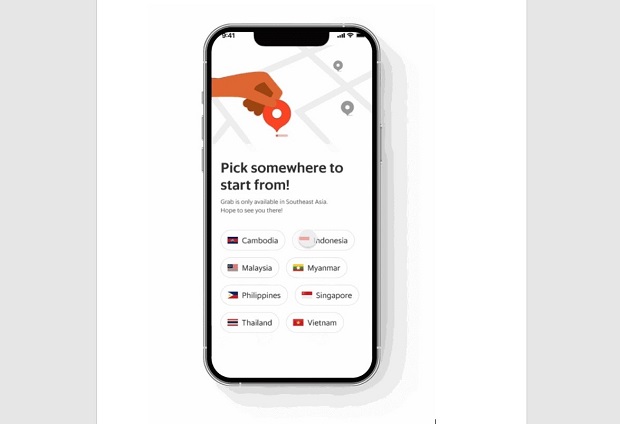Southeast Asia (SEA)’s growing tourism industry suffered a major setback due to Covid-19. From $393.12 billion in 2019, tourism only generated $143.25 billion for the region in 2021.
Yet, as borders reopened in 2022, trips picked up. In fact, international tourist visits to the region saw a 1,706% increase in 2022 compared to the previous year.

Mobile app Grab is aiming to become an asset for SEA’s tourism resurgence. On Monday, April 17, the tech company released a slew of fresh features, updates, and partnerships to make new normal travel in the region hassle-free.
“We want to be at the forefront of Southeast Asia’s travel revival, welcoming travelers back to the region with an enhanced Grab experience that is designed to help them travel with ease and peace of mind,” said Russell Cohen, group managing director of operations at Grab.
Grab’s enhancements particularly aim to help visitors in SEA plan their vacations ahead, conveniently find a ride when they touch down, and experience their destination like a local.
To accomplish these goals, their updates include their traveler homepage, an upgraded venues experience, a currency converter feature, translated merchant menus, and new languages.
First, the traveler homepage enables users planning their next overseas trip to explore 33 of the top cities tourists visit in SEA within the Grab app.
From this homepage, users can check out the Grab services present in the city, search and save important places like their accommodation address and landmarks they intend to visit, as well as explore food options near their anticipated destinations.
Arrival and finding transport in an unfamiliar airport is one of the most stressful parts of travelling. To streamline this experience, Grab invested in mapping all of SEA’s major airports to offer its next innovation, their upgraded venues feature.
With this update, even before booking a ride, visitors can preview images of the airport’s pick-up points. After indicating their preferred pick-up point, they will receive image-based, turn-by-turn walking directions to guide them to it.
The company is also working with airport authorities around SEA to set-up Grab lounges and exclusive Grab pick-up and drop-off lanes to further improve tourists’ airport experience
These services, though, only cover the beginning of travelers’ stay in the SEA region. Grab intends to assist tourists in every step of their journey.
“Our data shows that when travelers come to Southeast Asia, they generally stay about a week and we know, if we capture that first ride and we give a great experience, we have a much higher chance of seeing continued Grab usage through the visitor’s stay,” Cohen noted.
For instance, the venues feature is useful for visitors beyond their arrival. Grab mapped over 4,000 locations all over SEA besides airports, including hotels, malls, parks, and even popular tourist attractions such as the Singapore Zoo, the floating market in Pattaya, and the National Monument in Jakarta.
With this feature then, travelers can confidently find their way to pick-up points for the whole of their stay.
Another feature that will come in handy throughout a tourists’ trip is the currency converter feature.
Set to roll-out by mid-2023, this innovation will automatically display ride-hailing fares in travelers’ preferred local currency, so they don’t have to do manual conversions.
Grab even aims to address a a common frustration experienced by tourists during their travels: language barriers.
Foreign visitors can often miss the best dining spots because they can’t read the menu. To ensure the choicest local flavors are on their radar, Grab is working on translating merchants’ delivery and pickup menus in cities across Indonesia, Vietnam and Thailand into English. In certain Indonesian cities, Grab will even be providing Chinese menu translations by mid-2023.
Grab has also made its app available in Chinese, Korean and Japanese languages to cater to travelers of these nationalities, all of whom are critical tourist markets for Southeast Asia.
The Chinese version of the app is already downloadable on IOS and Android. The Japanese and Korean iOS versions are up and the Android one will soon follow.
The company, however, anticipated that some international visitors would prefer not to download another app they’d only use once. To that end, the company partnered with some of the world’s most popular apps — such as WeChat, AliPay, Ctrip, KakaoTalk and Booking.com — so these tourists can access Grab ride-hailing services directly from their familiar apps.
On these platforms, travelers will be able to select Grab pick-up and drop-off points, see the full range of vehicle types available locally, and view the estimated fare displayed in their home currency.
Additionally, tourists can pay via their preferred payment method through these apps.
On top of these partnerships, Grab has struck a deal with ride-hailing and ride-sharing platform Uber. Beginning in Q2 2023, Uber users that open the app while in Southeast Asia, will see a message directing them to Grab as Uber’s recommended way to travel in the region.
“We want to be their platform of choice, their preferred travel companion. We will continue to look for ways to deliver greater value to their travel journeys,” Cohen said.




